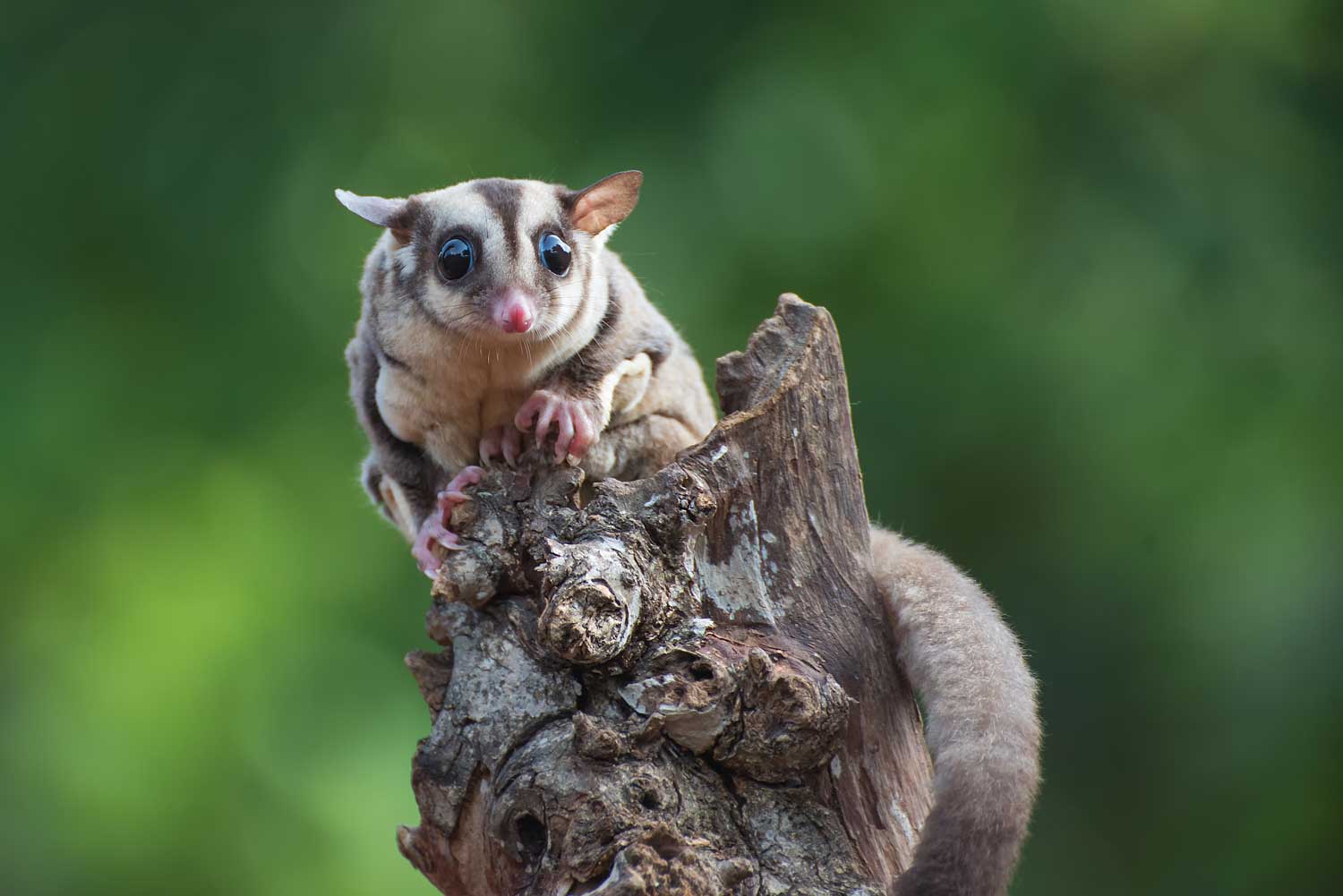Wild Relatives: The sugar glider

Editor’s note: Our Wild Relatives story series will explore the connections between our local wildlife species and related animals from around the globe. By learning about these exotic species, we hope to foster appreciation for the remarkable creatures that live in our backyards and neighborhoods.
North America is home to just one marsupial, the Virginia opossum, but Australia is a continent filled with marsupials. There they have kangaroos and koalas, wallabies and wombats just to name a few.
So what makes a marsupial a marsupial? Marsupials are mammals, so they give birth to live offspring. But their offspring are born at an early stage of development and they continue to develop in their mother's pouch.
All told, the world is home to more than 330 marsupial species, and two-thirds of them call Australia home, according to the Australian Museum. Another of the many marsupials of Australia is the sugar glider, an animal that might remind you of our local squirrel species — flying squirrels in particular.
Sugar gliders live in forests like our tree squirrels, and like flying squirrels, they can glide through the air, the San Diego Zoo reports. They are even about the same size as the gray squirrels and fox squirrels we are so familiar with. Despite their many similarities to squirrels, sugar gliders are more closely related to koalas and kangaroos than they are to squirrels, which are rodents not marsupials.
Creatures of the night
Sugar gliders are a woodland animal, inhabiting forests and wooded areas in eastern Australia and New Guinea. They spend most of their life in the trees, rarely reaching the ground. Like the southern flying squirrels that inhabit Illinois forests, sugar gliders are mostly nocturnal, the Australia Museum reports.
Sugar gliders are quite small, with a 6-inch body and a tail just about as long or sometimes even longer. They typically weigh between 3 ounces and 5 ounces, which is about how much a baseball weighs, the San Diego Zoo reports. Their large, black eyes are their most prominent physical feature, and they help them navigate in the dark. Their fur is mostly grayish brown, like a koala's, and they have white bellies and black stripes on their heads.
Unlike flying squirrels, whose name is a misnomer, sugar gliders are appropriately named because they can indeed glide through the air. They are able to take to the air in the same way flying squirrels do. They have a membrane called a patagium that is attached to their wrists and ankles, the zoo reports. When extended, it allows them to glide like a person wearing a parachute, covering a distance of up to 150 feet. They even use their tails like a rudder to help guide them in the air.
A sweet tooth
The sweet-sounding part of the sugar glider's name is thanks to its diet. These marsupials have a preference for sweet foods like eucalyptus sap, acacia gum and nectar from flowers, but their diet tends to change with the seasons, the San Diego Zoo reports.
They are characterized as opportunistic omnivores, meaning they eat plant and animal matter depending on what is available. They are known to snatch insects out of the air for a meal, and they sometimes eat small birds and lizards. In Tasmania, the swift parrot is considered an endangered species because sugar gliders are known to hunt its nestlings, according to the San Diego Zoo.
Sugar gliders don't just use the trees as part of a transportation network. They live in them too. They create nests in tree cavities, lining them with leaves for comfort. There they spend their days resting and sleeping, waiting for night to fall.
Social skills
Sugar gliders live in family groups, with an many as seven adults and their offspring sharing a tree nest, the Australian Museum reports. Although they are highly sociable, they will aggressively defend their territory against other animals, using urine and other bodily secretions to establish their territory, the zoo eports. They communicate amongst themselves — and other creatures — with a variety of vocalizations, including buzzing, barking, yapping, screaming and hissing.
Females usually give birth to twins, called joeys. (Fun fact: The babies of all marsupials are called joeys.) The babies will live in their mother's pouch for a time after being born and then stay close by until 10 months to 12 months after they are born, according to the San Diego Zoo. Grooming is a regular part of their social structure, and the activity both helps keep the animals clean and healthy and also allows them to form strong relationships.
Sugar gliders are listed as a stable species on the International Union for Conservation of Nature and Natural Resource's Red List of Threatened Species. They are sometimes captured and sold as part of the pet trade, although some states have outlawed their ownership as pets.
